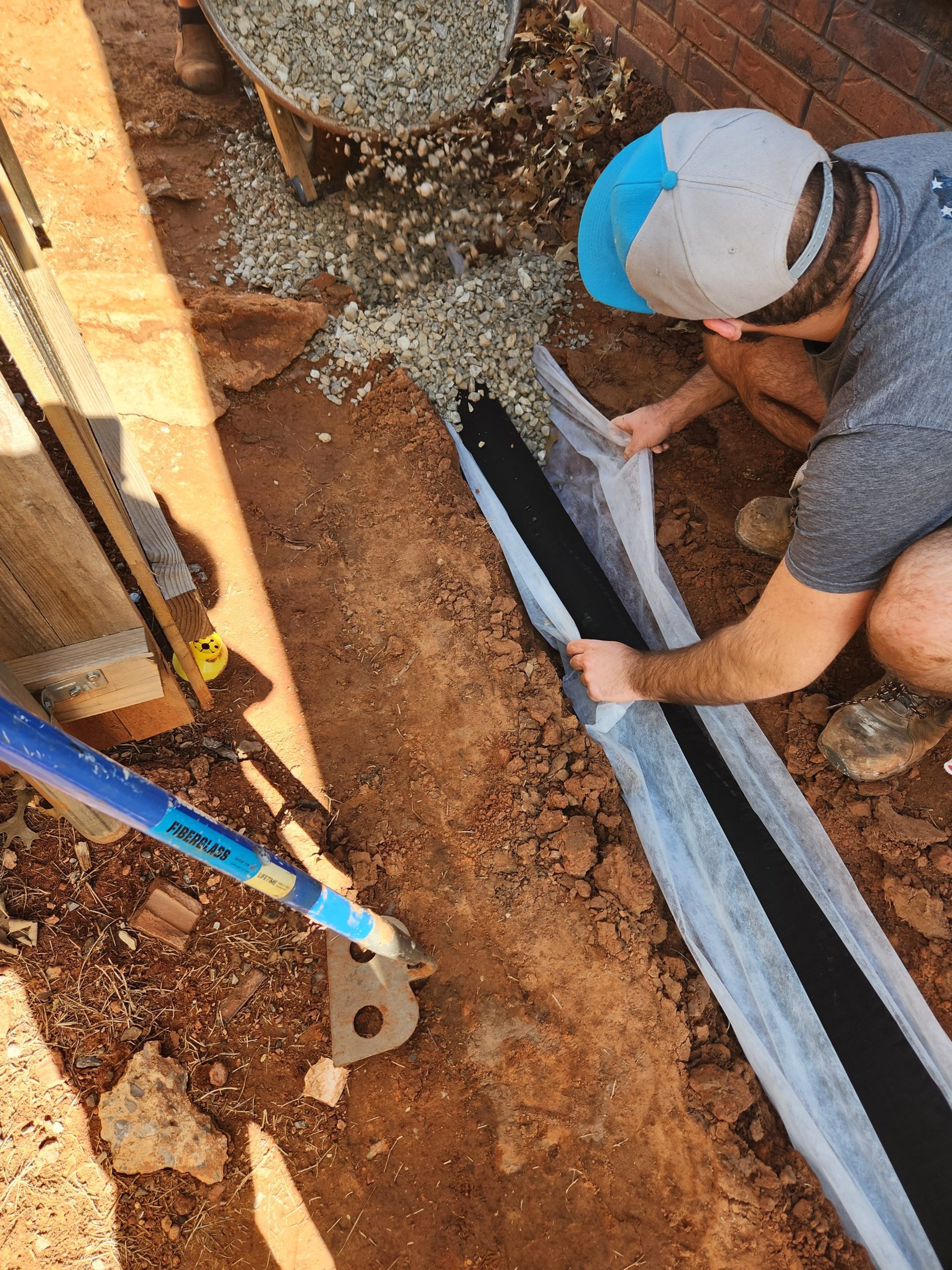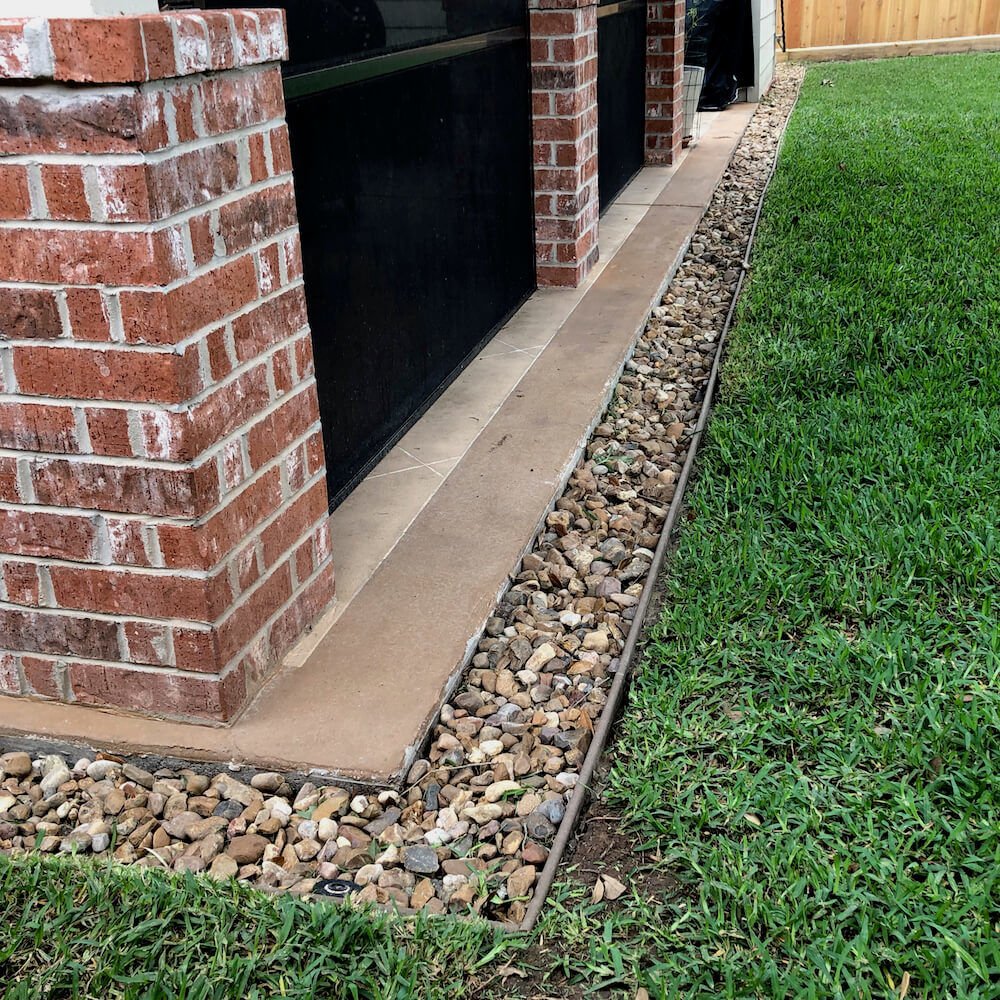Indicators Your Home Needs a Portland French Drain ASAP
Indicators Your Home Needs a Portland French Drain ASAP
Blog Article
The Important Guide to Preserving Your French Drainpipe for Long-Lasting Efficiency
Keeping your French drain is essential to its effectiveness and your home's defense. Routine checks can save you from expensive repair work and water damages. You'll need to know what indicators to look for and how commonly to evaluate your system. And also, comprehending the cleansing process can make a substantial difference. Let's discover the vital actions for guaranteeing your drain functions well for several years to come.
Understanding the Function of a French Drain
A French drainpipe is an essential part in handling water around your home. It routes excess water far from your foundation, preventing flooding and damage. When heavy rainfall drops, the drain collects water through a perforated pipe buried in gravel. This system permits water to stream openly, reducing stress on your basement walls and reducing the threat of leaks.You may wonder exactly how it functions in method. As water saturates the dirt, gravity draws it toward the drainpipe. The perforated pipe captures this water, transporting it to a designated water drainage location or storm sewage system. This procedure keeps your lawn dry and secures your home's structural integrity.Understanding just how a French drainpipe features is vital to valuing its significance. By effectively funneling water away, it helps maintain a risk-free and completely dry living setting. So, maintaining your French drain in top condition assurances you stay clear of expensive repairs down the line.
Regular Examinations: What to Seek
When you're evaluating your French drain, begin by looking for any kind of clogs that may be blocking water circulation. Pay interest to indicators of surface area erosion around the drainpipe, as this can indicate potential problems. Normal assessments will certainly aid keep your drainage system functioning properly.
Clogged Drainpipe Assessment
Just how can you tell if your French drainpipe is obstructed? Initially, look for water pooling in your backyard, especially after heavy rain. If you observe areas where water gathers as opposed to draining pipes, that's a red flag. You must likewise examine the drain electrical outlet; if water isn't draining as it should, there's most likely an obstruction. Listen for unusual gurgling noises, which can suggest trapped air. Additionally, evaluate the drainpipe's surface for any type of plants development, as origins can infiltrate and clog the system. Lastly, if you scent stuffy odors, it can indicate stationary water brought on by a clog. Regularly examining these indicators can help you keep your French drain efficiently and avoid costly repair services.
Surface Area Disintegration Examine

Cleansing Your French Drain: Step-by-Step Guide
Cleansing your French drain is essential for keeping it functioning correctly. You'll require some particular tools and a clear procedure to guarantee whatever runs smoothly. Let's stroll via the actions and ideas for keeping your drainpipe properly.
Tools You'll Require
To tackle the job of cleaning your French drainpipe effectively, you'll wish to gather a few important tools. Get hold of a durable pair of handwear covers to protect your hands from particles and sharp objects. A tiny shovel or trowel will help you get rid of dust or obstructions around the drainpipe. For removing the inside, a plumbing's serpent or a high-pressure water nozzle can be exceptionally beneficial. You'll likewise require a pail for accumulating any type of debris you pull out. Ultimately, having a yard tube handy will make it easier to wash out the drainpipe and ensure it's streaming efficiently. With these tools ready, you'll be established for a complete cleaning session!
Cleaning Up Process Actions
Beginning by examining the location around your French drain for any visible particles or obstructions. Eliminate leaves, branches, or dirt that might block water flow. Next, inspect the inlet and outlet areas; clear any obstructions to guarantee appropriate drainage. Make use of a garden tube to flush the drainpipe, guiding water right into the inlet. This helps displace any collected sludge or debris. Take into consideration using a plumbing technician's snake to damage them up if you observe consistent obstructions. After cleansing, check the crushed rock around the drainpipe; restore it if it's removed. Validate the drain covers are undamaged and safely in area to protect against particles from entering. Normal cleansing maintains your French drain working effectively.
Upkeep Frequency Tips
While routine maintenance is important for your French drain's durability, understanding just how frequently to maintain it can make all the distinction. Preferably, you should examine your French drainpipe at the very least two times a year, ideally in spring and autumn. After heavy rains or snowmelt, check for clogs or particles. If you discover any type of standing water, it's time to cleanse your drain.In areas with hefty vegetation, even more frequent upkeep-- regarding every three months-- may be required. Additionally, consider cleansing your French drainpipe after significant storms or if you observe water pooling in your lawn. By staying proactive, you'll ensure your French drain features properly and secures your home from water damage. Regular checks will certainly save you time and cash in the lengthy run.
Recognizing Common Issues and Their Solutions
It's crucial to identify typical issues with your French drainpipe and carry out efficient solutions when you discover water pooling in your yard or damp places in your basement. One frequent problem is blocking, typically triggered by particles like leaves or debris. To repair this, you can make use of a pipes snake or a high-pressure water jet to clear blockages.Another issue could be improper incline. Water won't flow away from your home if your drainpipe isn't sloped properly. You can adjust the slope by excavating and rearranging the drainpipe pipe.Lastly, check for damages or splits in the drain itself. Changing the harmed areas is crucial for peak efficiency if you discover any. By dealing with these problems quickly, you'll aid assure that your French drain proceeds to function successfully, protecting your home from water damage and keeping a completely dry, safe setting.
Seasonal Upkeep Tips for Your French Drainpipe
Attending to typical issues with your French drain is simply the primary step in assuring its lasting efficiency. Seasonal upkeep is vital for peak efficiency. In the springtime, remove leaves and debris that may have accumulated throughout wintertime. Look for any type of blockages in the outlet or capture container, as water requires a clear path to move freely.During summer season, inspect your drainpipe for any signs of changing or resolving soil. Ensure it's still degree and working correctly. As loss techniques, clean any kind of fallen leaves to protect against obstructions prior to winter months my company arrives.In winter season, watch for freezing temperatures. Make sure your drain isn't at danger of cold if you live in a chilly climate. Insulating subjected pipelines can aid. Normal checks and prompt upkeep can stop costly fixings and keep your French drainpipe working effectively year-round. Remain proactive and delight in comfort recognizing your drain system remains in excellent shape!
When to Hire an Expert
Knowing when to contact a specialist can save you time and protect against further damages to your French drainpipe. It's a clear sign that your drainpipe may be clogged or harmed if you notice persistent standing water in your backyard. Do not overlook weird smells, as they can show sewer backup or decay, which needs instant attention.If you discover that your drain isn't operating properly after attempts to tidy or maintain it, it's time to connect for expert help. In addition, if you're not sure concerning the underlying issues or do not have the necessary tools, hiring a specialist can supply tranquility of mind.Finally, if your French drainpipe is old or has actually experienced significant wear and tear, expert assessment can identify whether repair services or complete replacement is required. Trust the experts to ensure your water drainage system functions efficiently for years ahead.
Tips for Protecting Against Future Drainage Troubles
To keep your French drain working effectively, regularly inspecting and maintaining it can make all the distinction. Start by clearing debris, leaves, and dust from the surface and drain openings. This prevents blockages that can cause water backup. Inspect the crushed rock description around the drain; if it's compacted or eroded, think about including fresh crushed rock to maintain perfect flow.Next, draw away water far from your drainpipe by making sure downspouts and seamless gutters are clear and directing water a minimum of three feet away from your structure. Consistently inspect for any indicators of damages or drooping. If you observe issues, resolve them immediately.Finally, take into consideration installing a catch or a filter basin to trap bigger debris before it goes into the drainpipe. By remaining proactive with these pointers, you'll decrease the threat of future drainage issues and maintain your French drain in top form.
Often Asked Inquiries
How much time Does a French Drainpipe Generally Last?
A French drain typically lasts around 30 to 40 years, relying on the materials utilized and upkeep (Portland French Drain). If you stay on par with routine checks, you can extend its life expectancy even further
Can I Set Up a French Drain Myself?
Yes, you can install a French drainpipe yourself if you have actually got the right devices and expertise. Simply make sure to plan very carefully, adhere to regional laws, and assurance proper water drainage to prevent future concerns.
What Products Are Utilized in a French Drain?
You'll need perforated pipeline, crushed rock, landscape material, and a solid drainage pipe for your French drain. These materials assist reroute water effectively, preventing flooding and maintaining your residential or commercial property completely dry and secure from water damages.

Is an Authorization Required to Mount a French Drainpipe?
You'll likely need a license to mount a French drainpipe, depending upon local policies. Talk to your town to assure you comply with any type of essential guidelines and avoid potential concerns throughout installation.
What Are the Expenses Related To French Drain Upkeep?
Keeping a French drain normally costs between $100 and $500 annually. You'll require to think about expenses for cleansing, repairs, and inspections. Routine upkeep aids stop larger assurances and expenses your system works properly for many years - Portland French Drain. When you're inspecting your French drain, beginning by examining for any kind of obstructions that may be obstructing water flow. By remaining aggressive, you'll ensure your French drain functions successfully and safeguards your home from water damages. When you discover water merging in your yard or damp areas in your cellar, it's essential to recognize common concerns with your French drain and apply reliable remedies. You can adjust the incline by excavating and rearranging the drainpipe pipe.Lastly, check for damage or fractures in the drainpipe itself. Check the crushed rock around the drain; if it's compacted or eroded, consider adding fresh gravel to preserve excellent flow.Next, draw away water away from your drainpipe by making certain downspouts and rain gutters are he said clear and routing water at the very least 3 feet away from your foundation
Report this page